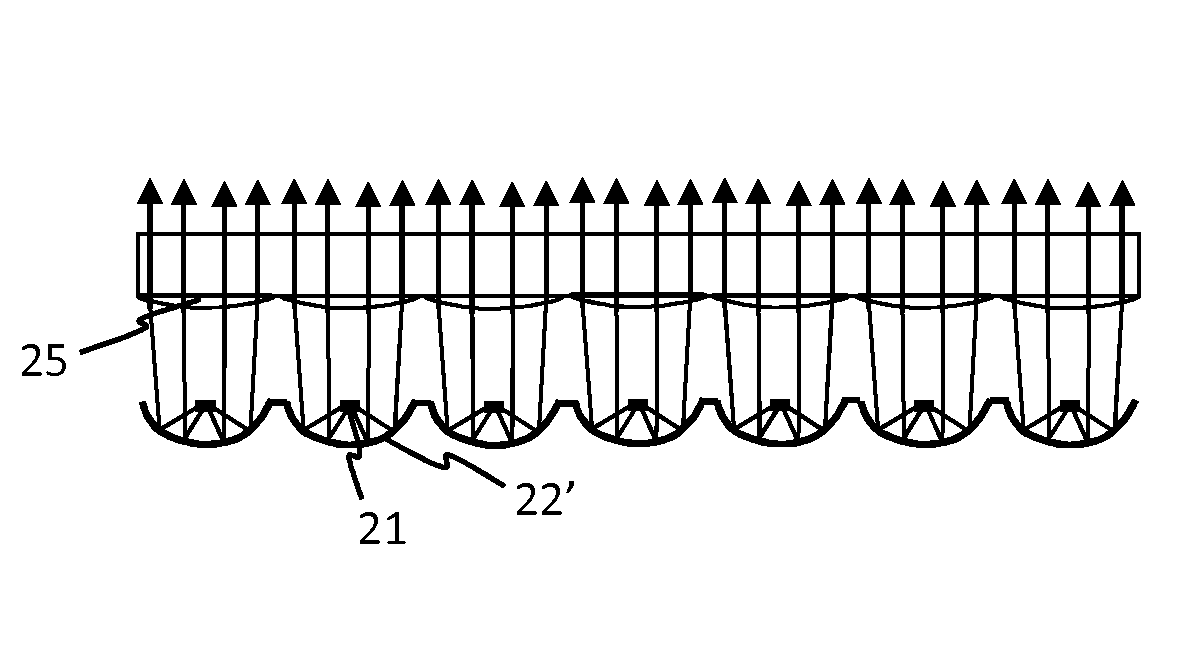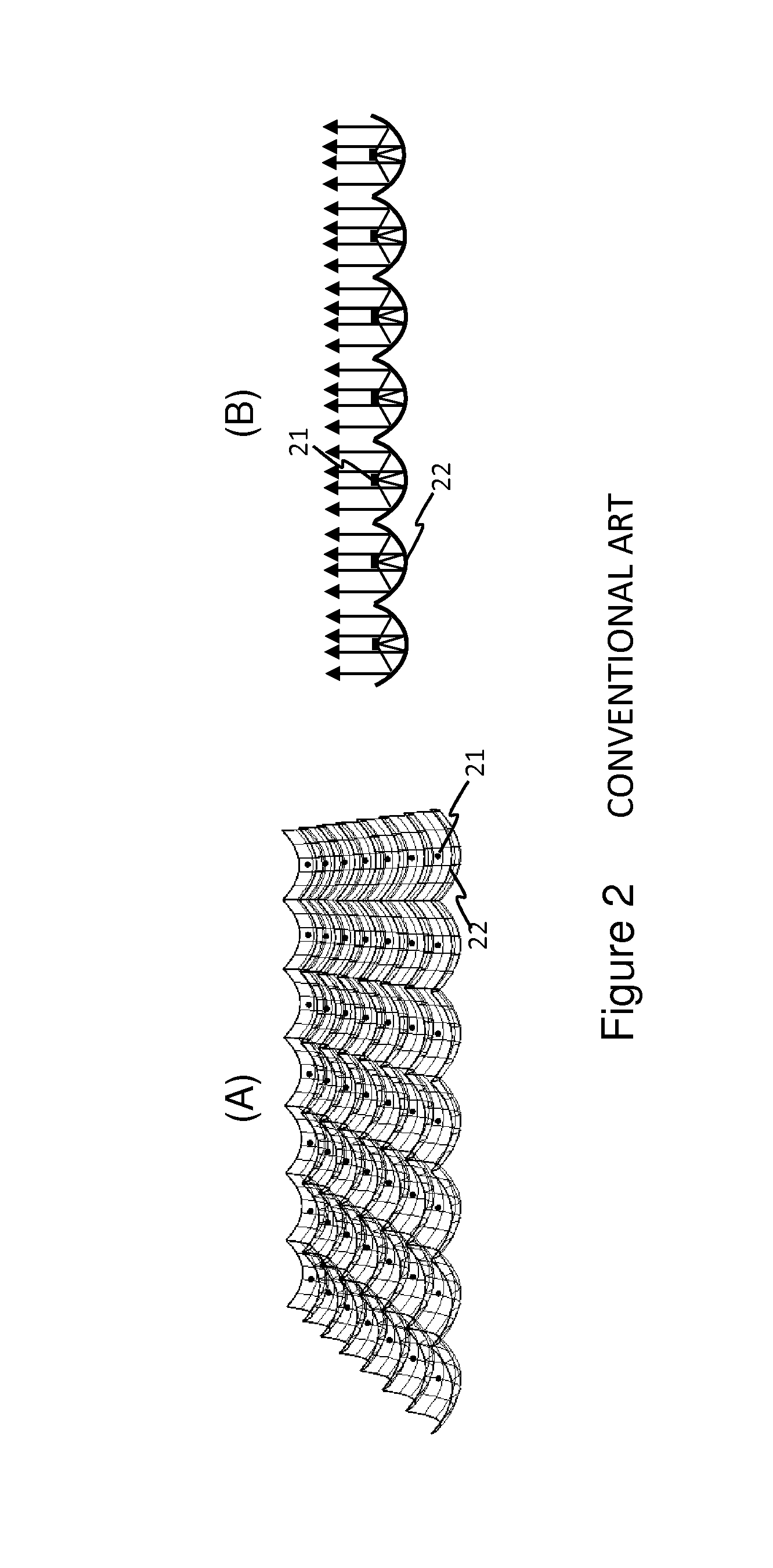Backlight
a backlight and light technology, applied in the field of backlight, can solve the problems of cross talk and consequent image degradation, difficult to achieve high collimated output with good light extraction efficiency and uniformity, and inability to achieve collimation. , the effect of loss
- Summary
- Abstract
- Description
- Claims
- Application Information
AI Technical Summary
Benefits of technology
Problems solved by technology
Method used
Image
Examples
first embodiment
[0088]The present invention provides a means of attaining spatial uniformity with highly collimated output with a much reduced device thickness. FIG. 4 illustrates the invention. FIG. 4(A) shows a 3-dimensional rendering of the geometry and 4(B) shows a cross-section including sample ray paths. In contrast to the backlight of FIG. 2, mirrors 22′ within the mirror array are not parabolic in shape and do not give collimated output after light from primary light sources 21 is reflected in them. A collimating lens sheet 25 made up of a lens array is used to collimate the light reflected by the mirror array. Each lens in the lens array is registered with a corresponding mirror 22′ in the mirror array. The mirror shape, lens shape, light source position and the separation between the mirror and lens sheet are carefully chosen to attain spatial uniformity as well as collimation in the light leaving the lens sheet 25.
[0089]The backlight includes a tiled array of single reflection light emit...
second embodiment
[0095]FIG. 6 shows a second embodiment where a lens cap 31 is placed over the LED to change the angular properties. Two configurations are shown. In the first, shown in FIG. 6(A), the lens cap 31 is purely refractive. More light is sent to higher angles from the axial direction than from the naked emitter. Specifically, the lens cap 31 alters the emission angular profile so that more light radiance is present at higher values of θ (but within the range 0°31′ causes total internal reflection of light rays emitted close to the axial direction of the mirror and lens. This can allow more light reflected at the mirrors to be steered away from the primary light sources. Both configurations enable more light to be prevented from impinging on the LED structure after reflection in the mirror. The form shown in FIG. 6(B) is particularly suited to steering light from the LED.
third embodiment
[0096]FIG. 7 shows a third embodiment in which the top lens sheet is replaced by an array of Fresnel lenses 25′. This enables a slightly thinner backlight to be realized and reduces the backlight weight. These are important design considerations in any mass produced display system.
PUM
 Login to View More
Login to View More Abstract
Description
Claims
Application Information
 Login to View More
Login to View More - R&D
- Intellectual Property
- Life Sciences
- Materials
- Tech Scout
- Unparalleled Data Quality
- Higher Quality Content
- 60% Fewer Hallucinations
Browse by: Latest US Patents, China's latest patents, Technical Efficacy Thesaurus, Application Domain, Technology Topic, Popular Technical Reports.
© 2025 PatSnap. All rights reserved.Legal|Privacy policy|Modern Slavery Act Transparency Statement|Sitemap|About US| Contact US: help@patsnap.com



